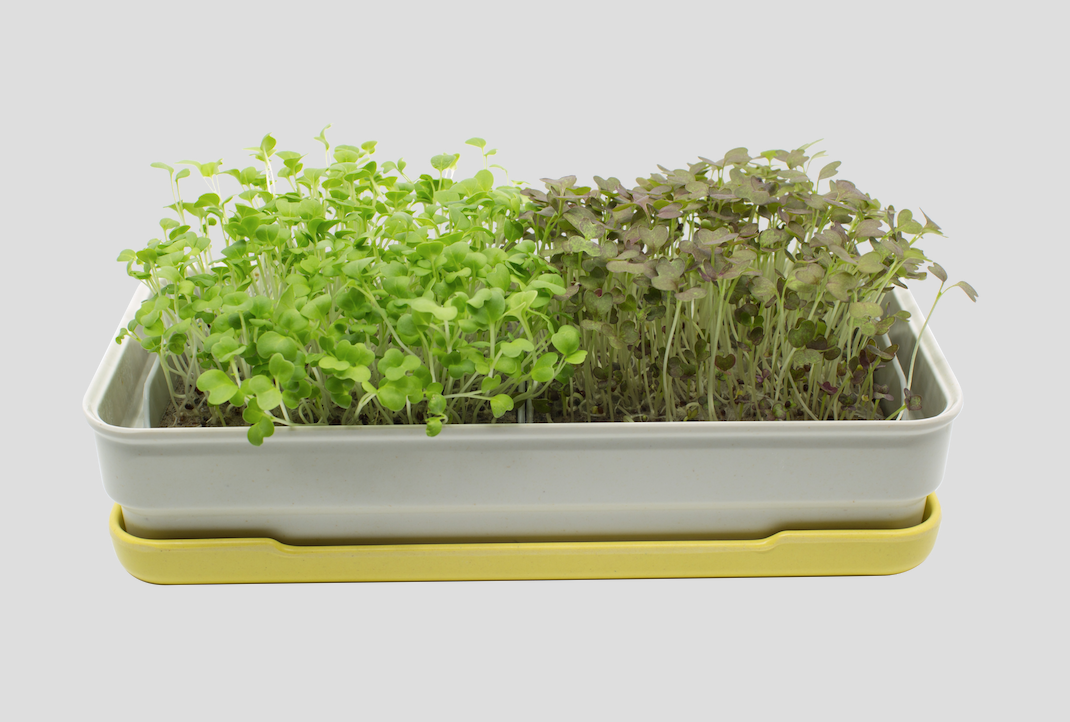
When a Christmas recipe called on microgreens Jeff Xu went searching.
Good looking, yes, highly nutritious, definitely – but worth the price listed at the supermarket? He wasn’t convinced.
So with no background in horticulture, he decided to grow his own and quickly discovered why people paid the premium.
“You have to water them every day, the lifecycle is so short it’s about a week or two weeks, you constantly have to harvest them and when you harvest them you have to get rid of the soil and start again.”
Xu, who has a background in structural engineering, says he was determined to see if he could make that process easier and got stuck into research on hydroponics.
With a friend from high school Brian Lai, plans were hatched, parts were ordered from eBay and AliExpress, and in his words “we built this monstrosity of a thing that looked like a little mini-fridge that was completely automated with a fan and lights and everything in it”.
“We thought this was awesome and we were going to go to market and try and sell this thing to cafés and take over the world, little did we know the market wasn’t ready for something like this”.
Full of ambition to get the ball rolling, Xu and Lai approached investors and companies for help with their microgreen venture, and applied for the Sprout Agritech Accelerator program, to which they were selected.

Xu says that six months completely transformed the product into what it is today. The duo learnt the seed mats were their crowning glory and stripped everything else away.
“We found that if you put this thing on the windowsill it works just as well,” Xu says.
“Having learnt about hydroponics along the way we tried different nutrients that we put into our seed mats that allowed the microgreens to grow really well.
“We just wanted to create something that was cheap and easy to use, and showed people it was possible and really easy to grow their own greens at home.”
With their streamlined seed mats and growing trays they hit field days to find out if they’d have customers, and what those hypothetical customers would pay.
“People were actually really interested in what we were doing, and we saw we could actually have a pretty good business out of this. We had a lot of people that pulled out their wallets and wanted to buy one of our prototypes.”
In February, the Micropod team, with a few new editions, went live selling starter kits that include a mix of seed mats – rocket, pak choi, mustard greens, red kale and mizuna – a biodegradable growing tray, and two growing grills.
The idea is customers grow their greens simply by watering them once and letting them sit for 7-12 days, harvest them, taste which ones they like, and reorder those seed mats. Xu says they already have customers signed up for automatic refills, cafes using them, and people taking them out on camping and fishing trips.
“I think there’s a an underlying value that people want to know where their food has come from, knowing they grew it themselves they have this pride, and it always tastes better. “It’s also something they want to show off to their friends”.

A major selling point for microgreens is they pack a punch with nutrients, boasting up to forty times the nutrients of a fully-grown vegetable.
Xu says there’s a need to think of food as a circular economy, working out how much energy we put into growing versus how much we get from that food.
Where a head of lettuce can travel more than 2000 kilometers and use 36 times the fossil energy to be put on a plate than it has in food energy, microgreens can be grown anywhere and give you a huge dose of nutrients in one handful, he says.
Micropod plans to make inroads into the Australian market shortly and hopefully the US after that. Once their name is more established Xu said the team plans to create something bigger so people can substitute most of their vegetable intake with microgreens.
But for the meantime, he says he’s so grateful customers are loving what the team is doing after a whirlwind year getting everything off the ground, and all sights are set forward.




